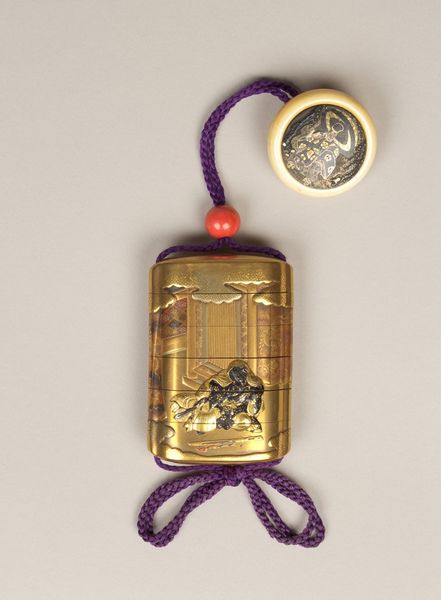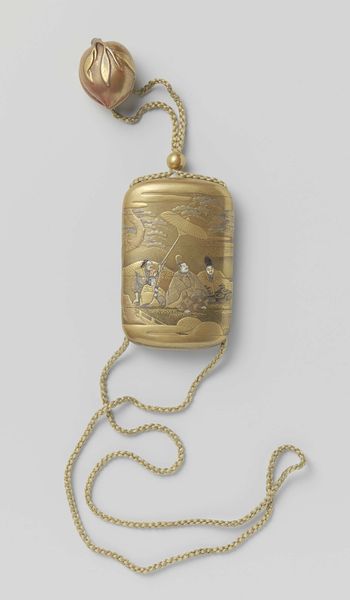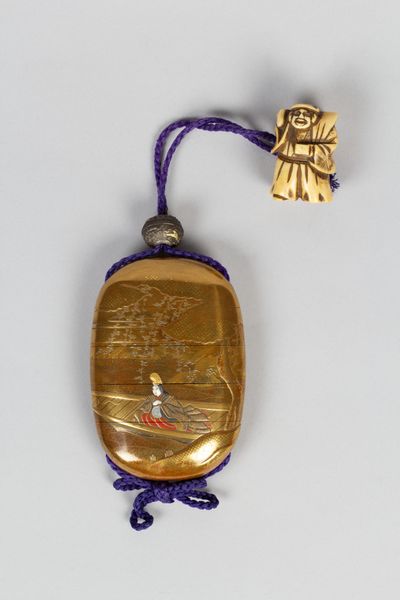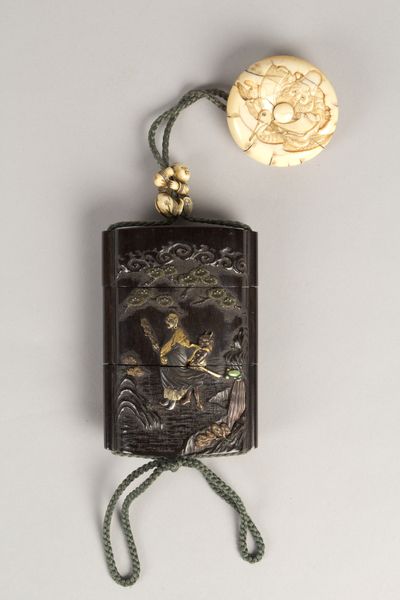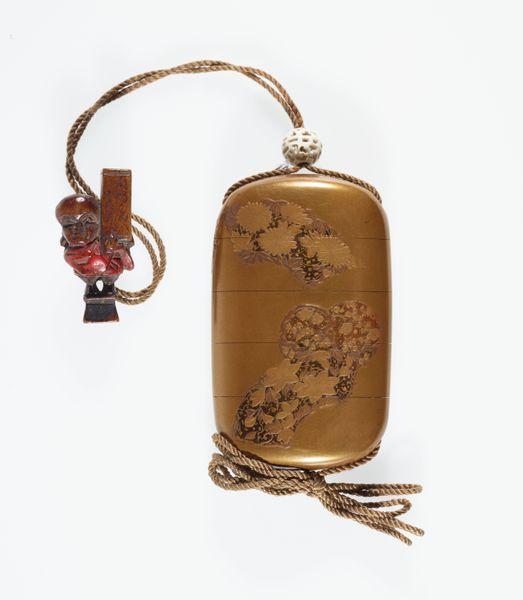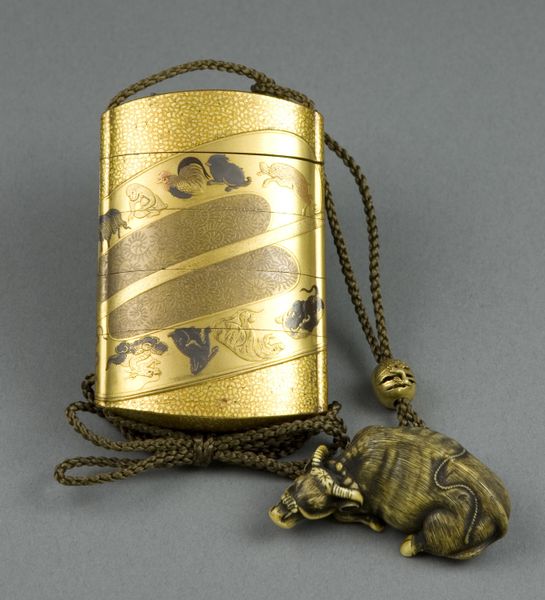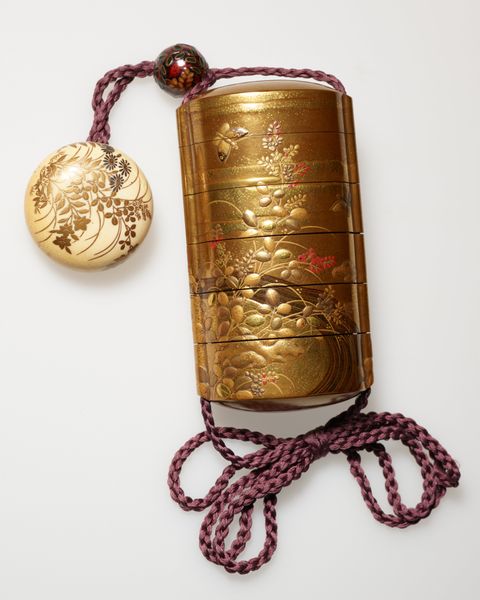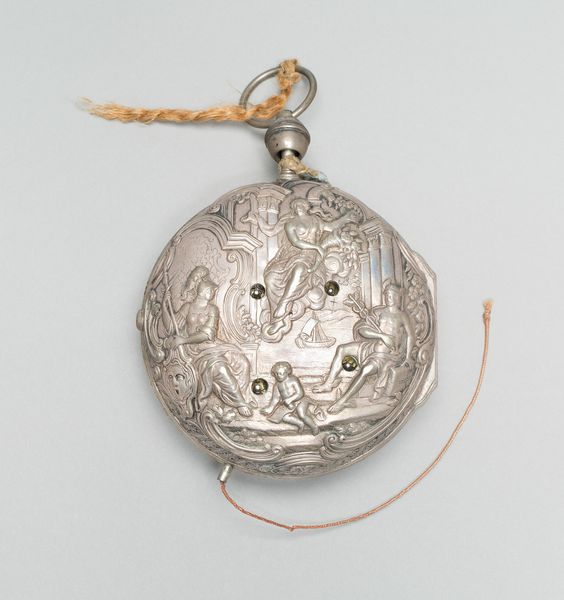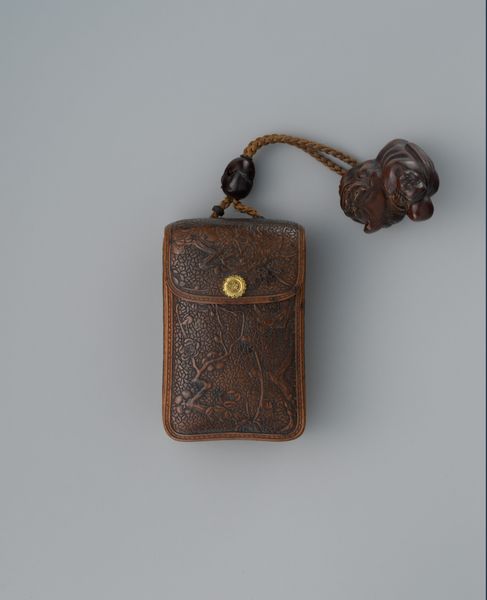
Case (Inrō) with Design of Seated Courtier Drinking Sake and a Young Woman with Maple Leaves 1767 - 1899
0:00
0:00
mixed-media, ink
#
mixed-media
#
asian-art
#
ink
#
miniature
Dimensions: 3 1/4 x 2 1/4 x 1 in. (8.3 x 5.7 x 2.6 cm)
Copyright: Public Domain
Editor: Here we have "Case (Inrō) with Design of Seated Courtier Drinking Sake and a Young Woman with Maple Leaves," an exquisite mixed-media piece by Kajikawa Katsuhira. It dates from between 1767 and 1899. I find the gold and detailed miniature artwork incredibly compelling, almost like a little storybook. What is your impression, what stands out to you? Curator: Certainly. The tripartite division of the inrō—case, netsuke, and ojime—demands our initial attention. Consider how the cylindrical form of the case is disrupted by horizontal bands, immediately creating visual complexity. And observe the textural contrasts; the granular effect of the gold lacquer is set against the smoother inlays depicting the figures. Does this contrast generate tension or harmony, do you think? Editor: I hadn't considered the individual components so deliberately, but it does create an interesting layered effect. How does the subject matter tie into all of this, in your opinion? Curator: The figural representations function within this framework of forms and materials. The seated courtier, balanced precariously by the upright woman creates an almost classical diptych within the overall design. Observe how the artist renders garments and bodies not mimetically but through a stylized mode. Their placement in the golden space, framed so elegantly and economically by horizontal banding makes use of a formal language for representation, one that asks of the observer consideration of line, balance and tone. Editor: So, less about the people themselves and more about how they’re used in the composition? That is helpful to note! Curator: Precisely. This formalist interpretation seeks meaning not in iconographic narratives or historical contexts but within the work's inherent aesthetic relationships. This can of course seem limiting, but close viewing as analysis unlocks different visual awarenesses. Editor: This lens really deepens the complexity. Now I feel more prepared for the next Asian Art exhibit! Curator: Indeed!
Comments
No comments
Be the first to comment and join the conversation on the ultimate creative platform.

